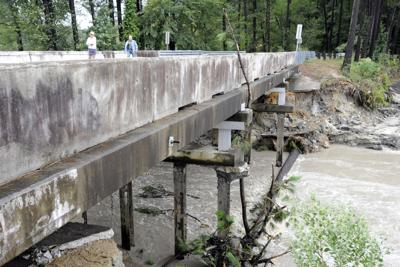In 2015, torrential rains fell across South Carolina, and about 50 dams failed, triggering South Carolina’s worst flooding in modern history.
State lawmakers increased funding to the Department of Health and Environmental Control’s dam safety office, which until then had two employees to inspect 2,400 regulated dams, but they did nothing to strengthen our anemic dam safety law.
In 2016, Hurricane Matthew took out 20 more regulated dams.
In 2018, a dozen regulated dams fell to Hurricane Florence, and catastrophic flooding crippled much of the Pee Dee. Some of those dams were long overdue for state-mandated repairs.
But when faced with this string of devastating events, the Senate Agriculture Committee gave a hearty endorsement Thursday to a bill that would actually weaken our dam-safety law. It is a dangerous measure that should be stopped in its tracks.
Granted, S.107 does require dam owners to give DHEC their phone numbers and email addresses, complete a dam safety checklist and notify emergency officials if they have “reason to believe that the dam or reservoir is near failure or has failed.”
But the bill also removes oversight of an estimated 1,600 “low-hazard” dams – some of which damaged public roads in recent floods. (An earlier version went so far as to specify that dam owners are under no obligation to alert anyone downstream that their dams are about to breach.) It says DHEC can exempt owners from completing a dam safety checklist if that would “impose a significant financial hardship on the owner.” And it gives some dam owners a refundable tax credit for repairing their dams.
The problem with deregulating most dams seems obvious. Those last two changes need some elaboration. The first says people who own dams that could endanger our lives and our property do not even have to complete a safety checklist if it would cause “a significant financial hardship.” Never mind the significant financial hardship that the breach of those dams imposes on individuals and society.
The second one means people who benefit from owning a dam can essentially hand the rest of us the bill for reducing the chance that their dam will harm us or our property. That’s like saying swimming pool owners can charge the public for building a fence around their property to keep the toddler next door from wandering in and drowning. It’s like saying a chemical business can charge the public for storing the inventory properly so it doesn’t blow up and destroy the neighborhood.
It’s true, as the S.C. Farm Bureau and its Senate allies argue, that we ought to reserve our toughest rules for dams whose failure are most likely to kill or cause major damage. It’s also true that our regulators should focus primarily on those most-dangerous dams.
It’s not true, though, that there should be no regulation of lower-risk dams. It’s also not true that our law needs to be weakened. What it needs – what lawmakers promised in 2015 but never did – is to be strengthened. S.107 is a step in the wrong direction.
— Post and Courier, Charleston



